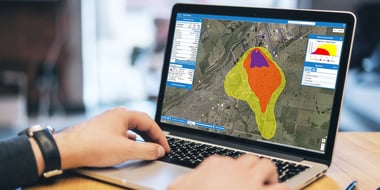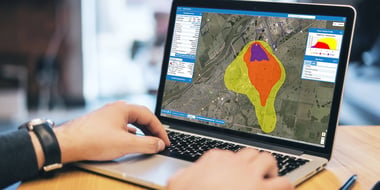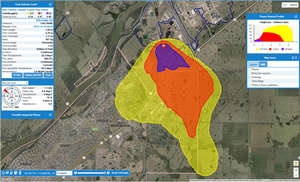Gas detection in the chemical industry can range from hand-held specialized gas monitors used by industrial hygienists or chemical engineers to the basic clip detection monitors used by the hundreds of operations personnel and contractors at a facility. There are a wide range of chemical hazards that can be found throughout a plant and there are many to detect these hazards. Because of this, it can be difficult to keep track of who is monitoring what hazards, where, and how.
The truth, however, is that keeping your employees and community safe has never been easier through the effective use of a chemical emergency toolkit.
Whether your gas monitoring program consists of a small team in one area or hundreds of contractors, one point remains the same: a properly vetted and practiced emergency toolkit is critical.
Why You Need a Response Plan for Chemical Emergencies
The core objective of a chemical emergency toolkit is to provide a common operating framework during emergencies, rapidly respond to incidents, limit financial loss, and protect human health. An emergency toolkit is a testament of your commitment to the safety and well-being of your community, your employees, and your shareholders.
In communities across the globe, most residents living near chemical facilities have not been trained on how to respond during a chemical accident – meaning it’s up to you and your team to protect your community from any hazardous gases or related incidents.
A 2018 survey, “Awareness about hazardous chemicals of residents living near chemical plants in South Korea,” found that only 10 percent of residents living near chemical facilities had been trained or educated on how to respond during a chemical accident, while only 30 percent of residents believed the facility operators had taken proper actions against chemical accidents in the past.
Including your community in your chemical emergency toolkit is crucial. By outlining communication plans and training the community along with your workers on sheltering-in-place and other protective measures, you can assure community members that you are ready to handle emergencies quickly and confidently without harming human life. The people in your community count on you to keep them safe—don’t let them down.
What to Include to Ensure Protection
The first line of defense against gas hazards is a small personal monitor. These devices, while essential, are often treated as the ultimate protection against gas hazards when in fact they represent the first building block in a true emergency response toolkit. While personal gas monitors are critical in protecting individual personnel, a true emergency response plan requires careful consideration of how these tools can be used in a broader context. By properly equipping your workers and responders, you are already taking a key step toward protecting your people and your community.
Adding connected area monitoring equipment like the Radius® BZ1 greatly improves multi-threat detection, establishes hazard perimeters, monitors for long-term hazards, enables remote monitoring of potential critical receptors, and is easy to re-deploy as a chemical emergency unfolds.
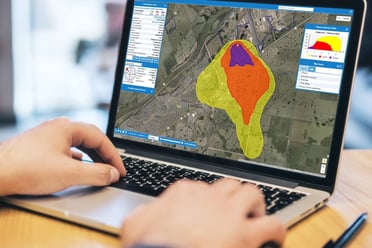 Connected area monitoring equipment can be further enhanced with real-time weather data and dynamic plume modeling software to truly take control of any chemical emergency.
Connected area monitoring equipment can be further enhanced with real-time weather data and dynamic plume modeling software to truly take control of any chemical emergency.
Incorporating real-time weather data in your chemical emergency toolkit helps increase the scope of your response readiness. Conditions can change rapidly during a crisis and relying on data that is delayed can seriously impair your ability to make the safest decision. By understanding live weather conditions surrounding your site, you can pinpoint areas of concern and ensure the safety of the potentially affected population. No matter the hazard, real-time weather data helps enable rapid assessment of where to deploy team members in an emergency.
Dynamic plume modeling software, like SAFER One®, is extremely versatile and can help your team in an emergency by:
- Quickly calculating chemical release rates
- Identifying potential leak sources
- Understanding how current conditions are affecting response teams and areas of concern
- Providing real-time data from on-site gas and weather sensors
- Establishing event views that provide the whole picture of an incident (including hazard location, personnel location, changing wind conditions, road closures, hot zones, and more)
- Establishing critical receptor locations and ensuring monitoring takes place
Dynamic plume models automatically adjust to your site’s conditions while recording incidents from the beginning of the incident to end. This feature gives you the information you need to understand any potential environmental impacts as well as review and develop lessons learned from the incident.
Deploying a Chemical Emergency Toolkit
Once you have added the right gas detection equipment to your chemical emergency toolkit, you should take the following steps to follow safety best practices:
- Pre-define the scenarios where a chemical emergency toolkit is needed. You need to acknowledge and understand the gas hazards impacting your facility by characterizing each hazard to create an individualized response plan.
- Identify points of interest both on-site and off-site. These could include places like schools, hospitals, public venues, or evacuation points. These points of interest should be built into your common operating framework.
- Establish a communication plan with local responders and local emergency planning committees so you can better respond to your neighbors.
- From there, you’ll need to practice, practice, practice. This entails everything from training your teams on how to use their equipment (What do those beeps mean? Who sees the data? How do I know what a safe or harmful condition is?) to understanding the operating framework (How do these devices communicate with each other? What are the hazards identified by dynamic modeling? How do we respond?).
- Once everyone at your plant knows how to use their equipment and the role they play, implement both small and large drills. For small drills, its recommended to practice equipment deployment and remote monitoring. Meanwhile, large drills replicate a full-scale scenario involving several departments and incorporating multiple elements of the chemical emergency toolkit. These scenarios and drills should be reviewed annually or semi-annually. Hazards come in all shapes and sizes, and it is best to be as prepared as possible.
In a recent example, a major refinery in the U.S. implemented their own emergency response toolkit and began running true-to-life drills with simulated chemical plumes. In doing so, they discovered that local first responders would be severely impacted by the modeled chemical hazard as they attempted to reach the facility. They were able to incorporate this information into their toolkit and are now able to ensure first responders will be protected while they respond to future incidents.
Having a set plan in place, knowing how to use your gas detection equipment, incorporating dynamic modeling, and consistently practicing emergency response drills is critical in not only establishing control during an emergency but keeping workers and communities safe during a time when every moment matters.
Using Your Toolkit for Operational Readiness
To get the most value out of your chemical emergency toolkit and the tools you’ve invested in, you should be using them for day-to-day operations, too. When you run plume models in SAFER One and prepare for planned events that you anticipate may be risky, you can take your safety plans from reactive to proactive to prevent exposure and reportable incidents.
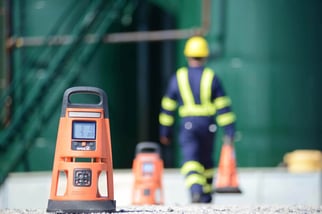 For example, if your facility is planning a turnaround, you might run models to understand which areas of the site are more likely to be impacted by a leak. With this information, you can strategically place area monitors around the perimeter to alert you if the gas plume extends beyond the expected boundaries. If something goes wrong, you are already prepared and can avoid sending workers into the gas plume to set up gas monitors.
For example, if your facility is planning a turnaround, you might run models to understand which areas of the site are more likely to be impacted by a leak. With this information, you can strategically place area monitors around the perimeter to alert you if the gas plume extends beyond the expected boundaries. If something goes wrong, you are already prepared and can avoid sending workers into the gas plume to set up gas monitors.
By combining your toolkit with emergency drills and operational readiness, you can take control of any situation to protect your workers, community, and environment.
To learn more about creating a chemical emergency toolkit, achieving operational readiness, and more, download our exclusive ebook.

